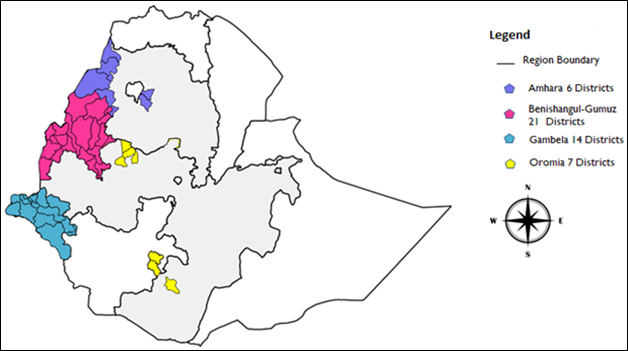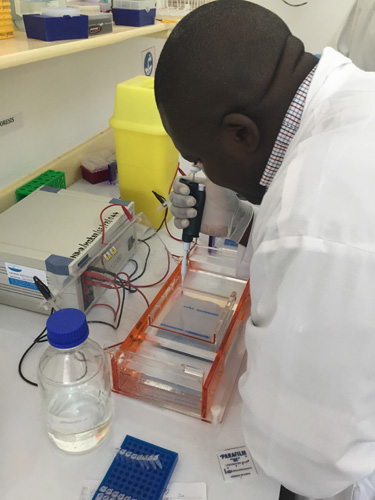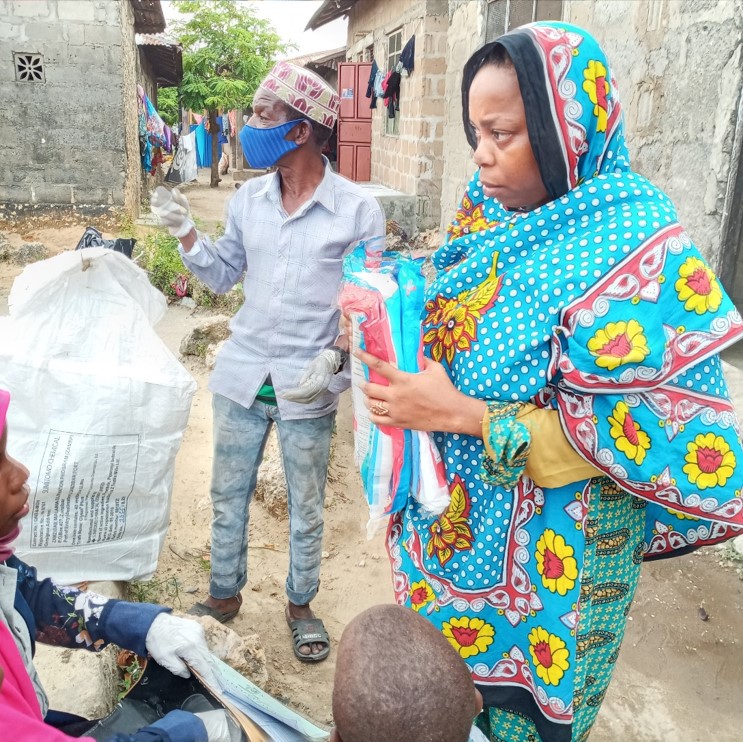 Malaria is endemic in Niger and is the leading cause of death and morbidity combined, disproportionately affecting children under 5 years of age. According to the Annual Health Statistics Report (2020), there were more than 4,332,909 malaria cases and 6,098 malaria deaths in Niger in 2020, compared to 3,621,972 malaria cases and 3,761 malaria deaths in 2019 (according to the Annual Health Statistics Report 2019), representing an increase in cases of 20% over the previous year and an increase in deaths of 62% over the previous year, putting it among the countries with the highest per capita rate of malaria fatalities globally.
Malaria is endemic in Niger and is the leading cause of death and morbidity combined, disproportionately affecting children under 5 years of age. According to the Annual Health Statistics Report (2020), there were more than 4,332,909 malaria cases and 6,098 malaria deaths in Niger in 2020, compared to 3,621,972 malaria cases and 3,761 malaria deaths in 2019 (according to the Annual Health Statistics Report 2019), representing an increase in cases of 20% over the previous year and an increase in deaths of 62% over the previous year, putting it among the countries with the highest per capita rate of malaria fatalities globally.
According to the Niger 2017-2023 National Strategic Plan, the vast majority of Niger’s population (94%) resides in the two southernmost (moderate and high transmission) zones, where malaria is most prevalent. The rainy season in Niger lasts three to four months, from June to September, with peak malaria transmission during the second half (August and September) of this period. With the new malaria epidemiological stratification, there are four endemicity strata in Niger (very low transmission, low transmission, moderate transmission, and very high transmission).
Despite the enormous progress Niger has made in recent years in the fight against malaria, the disease remains a real public health problem in the country. The situation is worrying – the 2021 world malaria report of the World Health Organization (WHO) ranks Niger among the eight African countries which together account for about 60% of cases and deaths due to malaria. The WHO recommends universal population coverage with ITNs as a prevention strategy in malaria control programs. Since 2009, with the support of partners, Niger has been carrying out ITN mass distribution campaigns in addition to delivering ITNs through the continuous distribution (CD) channels of routine antenatal care for pregnant women and the Expanded Program on Immunization for children under 1 year of age. Nevertheless, according to the 2019 world malaria report, the ITN coverage rate has increased very little since 2015, which leaves the country far from its universal coverage goal.
From July 2018 to March 2021 (project years 1–3) the PMI VectorLink Niger Project supported entomological monitoring activities including insecticide susceptibility and vector surveillance in a total of 17 sentinel sites (ranging from nine to 15 in any given year) distributed across the country.
In 2019, with support from the PMI VectorLink Project, the national ITN CD guidance was developed and shared with the health district managers and health facility chiefs in order to clarify when ITNs should be distributed. In 2020, more than 8.5 million Olyset ITNs have been distributed through mass campaigns in 44 health districts in moderate and high-transmission districts (759 health facilities and 2,525 distribution sites).
From June to December 2021, vector surveillance activities collected 19,127 Anopheles species using human landing catch (HLC), pyrethrum spray catch (PSC), and U.S. Centers for Disease Control and Prevention (CDC) light trap (LT) methods. In 2021, the susceptibility status of the main malaria vectors, An. gambiae s.l. (in 15 sites) and An. funestus s.l. (in Guidimouni) was determined for pyrethroid insecticides (alpha-cypermethrin, deltamethrin, and permethrin), organophosphates (pirimiphos-methyl), pyrroles (chlorfenapyr), and neonicotinoids (clothianidin). Furthermore, resistance intensity and piperonyl butoxide (PBO) synergism was conducted when resistance was confirmed to all pyrethroids tested.
In year five (April 2022 – March 2023), the PMI VectorLink Niger Project is continuing to work with the NMCP and CERMES to conduct entomological monitoring and implement ITN-related activities. The project is providing entomological monitoring technical support to the NMCP, with the primary objective of providing the program with data for vector control decision making. Additionally, the project has subcontracted with CERMES for all laboratory activities for mosquito sample analysis. The field teams are made up of trained entomological technicians from NMCP and CERMES. In the first year that CERMES is responsible for all field activities, to better ensure that all protocols are followed, and collection forms are properly completed, the VectorLink Niger Chief of Party (COP/Entomologist) and the NMCP entomologist will each carry out two formative supervision trips for bionomics and two for resistance monitoring. In addition, a social networking platform has been created for all field staff to ensure real-time data. The entomological monitoring approach was agreed upon with PMI, the NMCP, and CERMES and includes annual insecticide resistance monitoring in 15 sites and monthly vector bionomics surveillance (for up to seven consecutive months) in six sites, as in 2020 and 2021. The project is continuing to provide technical support for CD of ITNs to enhance integrated vector control programming in Niger.
The project’s key objectives for each component are as follows:
Entomological monitoring:
- Determine the susceptibility of the primary malaria vector, gambiae s.l., to insecticides in 15 sentinel sites selected by the NMCP, which are spread across the four transmission zones;
- Measure the intensity of resistance to insecticides and determine the mechanism of resistance in the sites where resistance is detected;
- Monitor the density, species composition, behavior, and infectivity of malaria vectors in the six sentinel sites;
- Ensure the use of the District Health Information System 2 (DHIS2)-based VectorLink Collect database for improved entomological data monitoring, reporting, and decision making by relevant stakeholders, and
- Conduct ITN cone bioassays in accordance with WHO recommendations using wild collected gambiae s.l. from two localities selected by the NMCP, with ITNs procured by PMI for routine distribution.
National entomological monitoring capacity-strengthening activities:
- Conduct monthly meetings with CERMES staff and technicians and the NMCP Entomology Unit technicians to monitor progress toward objectives, follow up on activities, and identify/resolve challenges;
- Provide technical support to the CERMES in insectary management and report-writing with NMCP supervision;
- Conduct a refresher training in entomological collection methods;
- Support an advanced laboratory training for experienced entomologists at CERMES provided by the University of Notre Dame to ensure total capacity building on all PCR and ELISA techniques as well as the interpretation of PCR results as requested by CERMES;
- Support successful access and use of the DHIS2-based VectorLink Collect database by relevant users including CERMES, and the NMCP;
- Continue to offer data quality control and data interpretation support to build NCMP capacity to make evidence-based vector control decisions;
- Train two field technicians from the Districts of Keita and Balleyara on basic entomological techniques (building district level capacity in addition to the two agents trained in Gaya and Agadez in 2021); and
- Support the organization of two meetings of the vector control working group, to review country national data for decision making.
National capacity building for ITN distribution:
- Coordinate with the NMCP and PMI Impact Malaria project to organize and carry out an integrated bi-annual supportive supervision including ITN Continuous Distribution follow-up in the two PMI focus regions (Dosso and Tahoua);
- Support the presentation of results from ITN durability monitoring activities held over the three years following the 2018 mass campaign, with the final product being a peer-reviewed publication;
- Support radio dissemination of key messages in local languages about prenatal care and child health services in the two targeted regions;
- Provide financial support for a 3-day information visit by high level MOH persons (members of the organizing committee of the 2022 ITN mass distribution campaign) to inform the local authorities on the organization of the campaign (in a context of insecurity). The visit will be conducted in the form of a workshop in Dosso and Tahoua bringing together all the 13 prefects of the districts concerned by the 2022 campaign; and
- Provide technical assistance during the ITN 2022 mass distribution campaign if requested by NMCP and CRS.
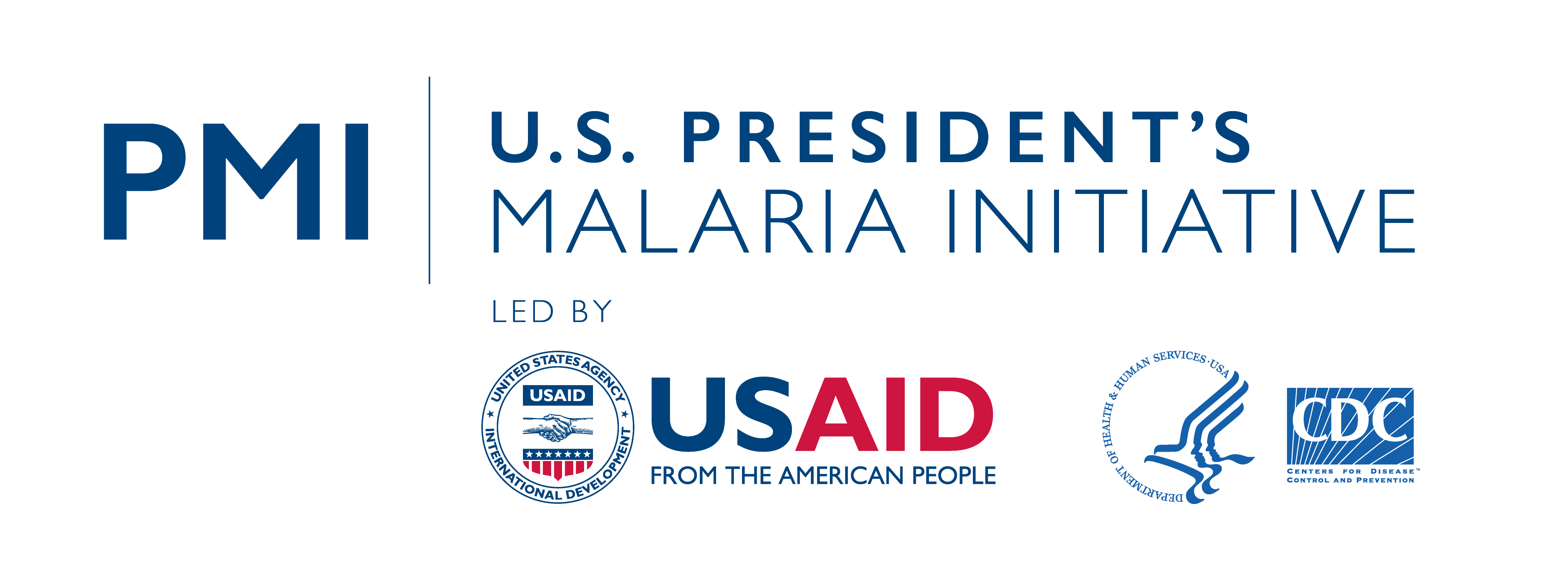

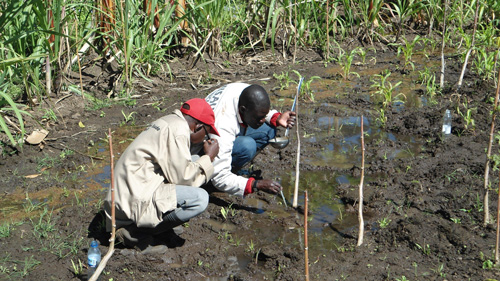 Malaria is considered the most important public health problem in Mozambique where it accounts for nearly one-third of all deaths and 42 percent of deaths in children less than five years old. Although malaria prevalence has decreased in all provinces, the country continues to face challenges that have slowed the progress of key malaria prevention and treatment interventions. PMI-supported activities include support for the national indoor residual spraying (IRS) program; free routine insecticide-treated Bed Net (ITN) distributions to pregnant women and to children; procurement and distribution of rapid diagnostic tests to all levels of the health system; provision of intermittent preventive treatment of pregnant women; and revitalization of the community health worker program.
Malaria is considered the most important public health problem in Mozambique where it accounts for nearly one-third of all deaths and 42 percent of deaths in children less than five years old. Although malaria prevalence has decreased in all provinces, the country continues to face challenges that have slowed the progress of key malaria prevention and treatment interventions. PMI-supported activities include support for the national indoor residual spraying (IRS) program; free routine insecticide-treated Bed Net (ITN) distributions to pregnant women and to children; procurement and distribution of rapid diagnostic tests to all levels of the health system; provision of intermittent preventive treatment of pregnant women; and revitalization of the community health worker program. *The PMI VectorLink Mali project closed out on March 31, 2023.
*The PMI VectorLink Mali project closed out on March 31, 2023. Despite progress, malaria continues to be a major public health problem in Malawi. The disease accounts for 33 percent of hospitalizations in children under five, 34 percent of all outpatient visits, and is one of the major causes of morbidity and mortality across all age groups. Transmission is perennial in most areas and peaks during the rainy season from November to April. With support from PMI and other partners, the Ministry of Health’s National Malaria Control Program has been able to scale up the distribution of ACTs, IPTp using SP, and ITNs. Progress to date is promising; between 2006 and 2015, the mortality rate for children under five years of age decreased to an estimated 64 deaths per 1,000 live births.
Despite progress, malaria continues to be a major public health problem in Malawi. The disease accounts for 33 percent of hospitalizations in children under five, 34 percent of all outpatient visits, and is one of the major causes of morbidity and mortality across all age groups. Transmission is perennial in most areas and peaks during the rainy season from November to April. With support from PMI and other partners, the Ministry of Health’s National Malaria Control Program has been able to scale up the distribution of ACTs, IPTp using SP, and ITNs. Progress to date is promising; between 2006 and 2015, the mortality rate for children under five years of age decreased to an estimated 64 deaths per 1,000 live births. Malaria remains a major health problem in Madagascar, particularly for children and pregnant women. Severe malaria is among the top five causes of reported overall mortality.
Malaria remains a major health problem in Madagascar, particularly for children and pregnant women. Severe malaria is among the top five causes of reported overall mortality.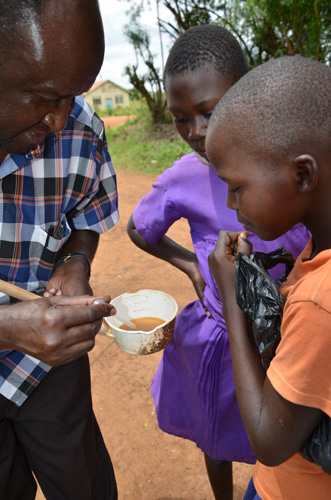
 In Ghana, IRS is a core vector control intervention and a component of the current National Malaria Control Strategy and Ghana Strategic Plan for Malaria Control 2014-2020. PMI support for IRS started in 2008. In the ensuing 12 years, PMI has targeted between five and nine districts in the Northern region (recently divided into three regions: Northern, North East, and Savannah) per year, with the highest number of structures sprayed (383,142 structures) and population protected (941,240 people) in 2012. AngloGold Ashanti Malaria Control Ltd (AGAMal) has been conducting IRS since 2006 in the Obuasi district of the Ashanti region with its own funds. Since 2008, AGAMal has received financial support from the Global Fund to expand its IRS activities to the entire Upper West and three districts in the Upper East regions.
In Ghana, IRS is a core vector control intervention and a component of the current National Malaria Control Strategy and Ghana Strategic Plan for Malaria Control 2014-2020. PMI support for IRS started in 2008. In the ensuing 12 years, PMI has targeted between five and nine districts in the Northern region (recently divided into three regions: Northern, North East, and Savannah) per year, with the highest number of structures sprayed (383,142 structures) and population protected (941,240 people) in 2012. AngloGold Ashanti Malaria Control Ltd (AGAMal) has been conducting IRS since 2006 in the Obuasi district of the Ashanti region with its own funds. Since 2008, AGAMal has received financial support from the Global Fund to expand its IRS activities to the entire Upper West and three districts in the Upper East regions.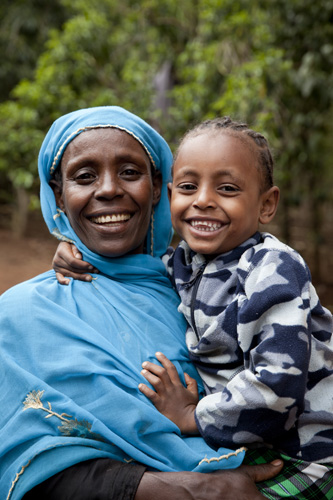 Though malaria prevalence in Ethiopia is relatively low compared to other African nations, nearly 70 percent of the population lives in areas at risk of malaria. Prompt access to quality malaria case management, including laboratory-based diagnosis in remote rural areas, has improved dramatically over the last decade as have surveillance systems that capture malaria cases and deaths.
Though malaria prevalence in Ethiopia is relatively low compared to other African nations, nearly 70 percent of the population lives in areas at risk of malaria. Prompt access to quality malaria case management, including laboratory-based diagnosis in remote rural areas, has improved dramatically over the last decade as have surveillance systems that capture malaria cases and deaths.